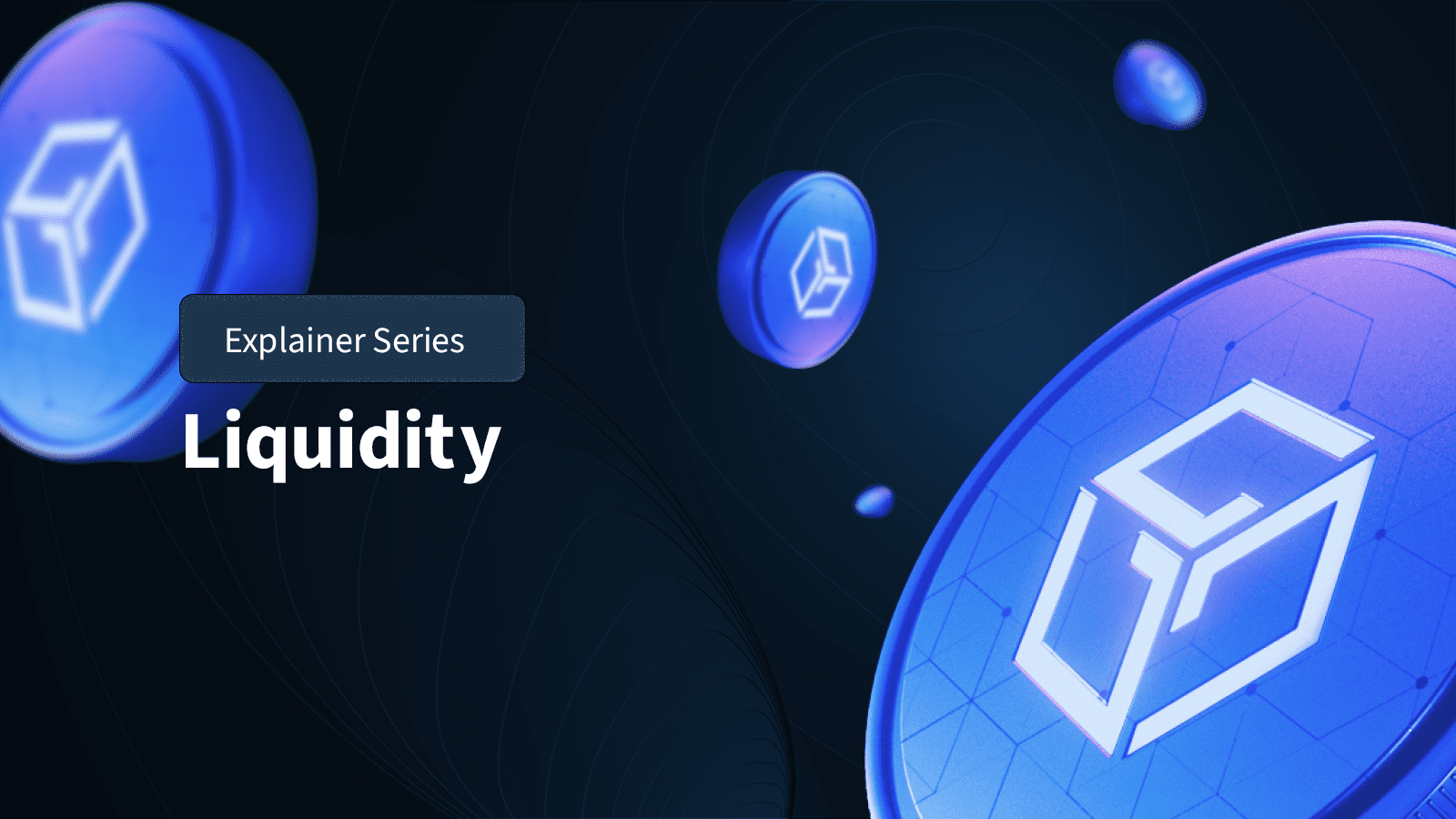Liquidity is a concept that pops up often in the world of finance, and it’s just as important in the Web3 space, especially with the rise of decentralized finance (DeFi). In simple terms, liquidity refers to how easily you can buy or sell an asset like a cryptocurrency, without drastically changing its price.
To put it in everyday language, imagine you’re at a market selling apples. If there are plenty of buyers ready to purchase your apples at the current price, then your apples are more “liquid.” You can sell them quickly, and you don’t have to drop the price to attract a buyer. However, if there are only a few buyers, you might have to lower the price or wait a while to sell your apples. In that case, your apples are less liquid.
Sellers and buyers are both necessary for any market to work effectively; the concentration of each of them influences the market in many different ways.
In Web3, liquidity applies to digital assets like cryptocurrencies and tokens. High liquidity means people can trade their tokens quickly, while low liquidity means it’s harder to find someone to trade with, and you may need to wait longer or accept a worse deal.
Why is Liquidity Important in Web3?
Liquidity plays a big role in how smoothly decentralized markets and applications function. Here’s why liquidity is crucial in the Web3 world:
Efficient Trading: High liquidity means you can easily trade your tokens without slippage (the difference between the expected price of a trade and the actual price). If liquidity is low, prices can swing drastically after each trade, creating an inconsistent and unpredictable market.
Fair Prices: In liquid markets, prices tend to be more stable and reflective of real value. With low liquidity, even small trades can cause big price movements, making it harder to predict what you’ll pay or receive for a token. This is why with tens of thousands of altcoins in existence, the vast majority of them have proven so volatile from one day to the next.
User Experience: Web3 applications like decentralized exchanges (DEXs) need liquidity to offer fast and reliable services. If liquidity is low, users may experience delays or unfavorable prices when trading tokens, which can discourage participation in that exchange. For a decentralized exchange like Uniswap to compete with a centralized (privately owned) exchange like Coinbase, liquidity is used to create equally convenient trading activities for users.
How Does Liquidity Work in Web3?
In Web3, liquidity typically comes from two main sources:
- Liquidity Providers (LPs): In decentralized finance (DeFi), liquidity often comes from regular users who deposit their crypto into a liquidity pool. These users are called liquidity providers. By contributing their tokens to the pool, they help create liquidity, which allows others to trade. In return, liquidity providers earn rewards like a share of the trading fees. Typically, a liquidity provider contributes to a liquidity pool by providing an equal-value amount of both tokens involved in that exchange pairing.
- Liquidity Pools: A liquidity pool is a smart contract that holds funds to facilitate trading between different cryptocurrencies on a decentralized exchange. For example, if someone wants to trade Ether (ETH) for a stablecoin like USDC, the liquidity pool allows them to do so without needing a direct buyer or seller. The more funds in the pool, the easier and quicker trades can be made.
Think of liquidity pools like communal pots of money that people can use to trade tokens with each other. The bigger the pot (more liquidity), the easier it is for everyone to trade, and with larger amounts at a time.
Examples of Liquidity in Web3
Uniswap and Liquidity Pools: One of the most popular platforms in DeFi, Uniswap, allows users to swap between different tokens by tapping into liquidity pools. Users provide liquidity by depositing pairs of tokens (like ETH and USDC) into the pool. In return, they receive a percentage of the fees generated when other users make trades.
Stablecoins as Liquid Assets: Stablecoins like USDC or DAI are often considered highly liquid because they are widely used and can be easily exchanged for other tokens. Their prices are stable, which makes them ideal for providing liquidity in many DeFi applications.
NFT Liquidity: Liquidity doesn’t just apply to cryptocurrencies—it also applies to NFTs (non-fungible tokens). Some platforms are experimenting with ways to create more liquidity for NFTs by letting users fractionalize them, meaning they split the NFT into smaller pieces that can be traded more easily.
Liquidity Mining and Yield Farming
In the Web3 world, liquidity mining or yield farming is a way that people are incentivized to provide liquidity to a decentralized platform. Essentially, liquidity providers earn rewards, usually in the form of extra tokens, for depositing their assets into a liquidity pool.
For example, if you deposit your crypto into a liquidity pool on Uniswap, you may receive Uniswap’s governance token ($UNI) as a reward. This is a reward incentive, a way to encourage more liquidity, keeping decentralized exchanges running smoothly.
Why Liquidity Matters for Web3 Projects
For Web3 projects to thrive, they need liquidity. Without it, users would struggle to trade tokens or interact with decentralized applications (dApps). Here are a few key reasons why liquidity is critical:
Smooth Functioning of DEXs (Decentralized Exchanges): DEXs rely heavily on liquidity pools. Without enough liquidity, users can’t easily swap tokens, which disrupts the whole system.
Trust and Adoption: High liquidity signals trust in a project. If a project has deep liquidity, more users are likely to join, trade, and use the platform. On the other hand, low liquidity can deter users because they may worry about the stability and usability of the platform.
Price Stability: More liquidity means token prices are more stable and less likely to be affected by large trades. This creates a healthier market and attracts both casual and serious investors.
Common Liquidity Terms in Web3
- Liquidity Provider (LP): A user who contributes tokens to a liquidity pool to facilitate trading on a decentralized exchange.
- Liquidity Pool: A smart contract that holds tokens to enable decentralized trading between two or more cryptocurrencies.
- Slippage: The difference between the expected price of a trade and the actual price. High slippage happens in low-liquidity environments.
- Liquidity Mining/Yield Farming: The process of earning rewards for providing liquidity to a platform or decentralized exchange.
- Impermanent Loss: A potential risk for liquidity providers. This occurs when the price of the deposited tokens changes compared to when they were deposited, leading to lower value when they’re withdrawn.
The Lifeblood of Web3
Liquidity is crucial to making decentralized platforms work efficiently. Whether it’s enabling quick and cheap token swaps, stabilizing prices or collecting rewards through liquidity mining, liquidity plays a huge role in Web3 ecosystems.
For those new to the Web3 world, understanding liquidity can help you make better decisions when participating in DeFi platforms, trading tokens or even providing liquidity yourself for passive rewards.


